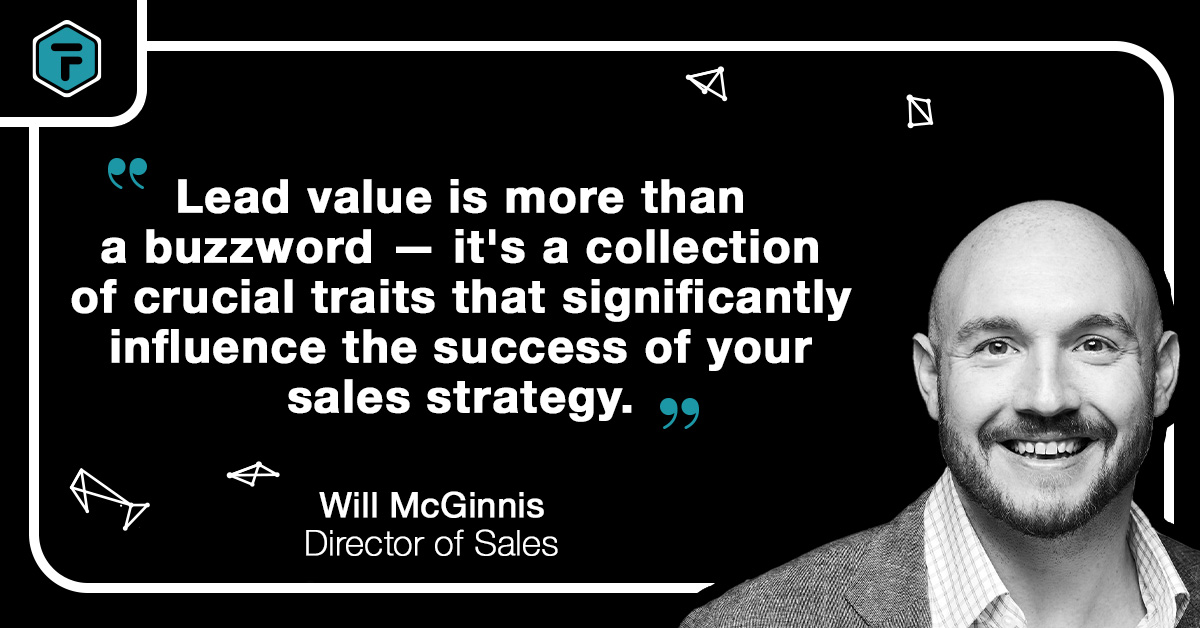
By: Will McGinnis, Director of Sales
It’s Time To Open the Hood on Lead Quality
In the sales world, we often get caught up in the race for bigger numbers. However, there is a crucial component many sales managers overlook — lead value. It's not just about gathering leads from every possible source; it's about understanding and leveraging the value of those leads, so you can scale faster and more efficiently. Let's delve deeper into this, starting with how you can get quality leads.
Key takeaways:
- All leads are not created equal; their source, interest level, and alignment with your offering matter.
- The value of a lead extends beyond conversion — consider the lifetime value of the lead.
- Exploring different lead sources can help uncover where high-quality leads are coming from.
- The customer journey is not linear; finding ways to track the twists and turns will give you the insights you need in order to improve your metrics.
- Leads don’t always come from a single “source.” Your prospects often learn about your brand through multiple touchpoints.
The Underrated Metric of Lead Quality
It's easy to get caught up in the race to gather as many leads as possible. More leads usually mean more sales, right? Well, not always.
We need to recognize that all leads aren't created equal. Some leads, depending on where they come from, their interest level, and how well they gel with what you're offering, are more likely to convert than others. It's not just about packing your sales funnel with as many leads as possible. It’s about getting leads that are more likely to stick around for the entire journey, from being a prospect to becoming a paying customer.
Think about where your leads are coming from. Are they seeing your mailers? Did they come through an online search campaign? Maybe they discovered you through your company's social media accounts. Each of these sources will attract different types of folks. For example, you might find that the leads you pick up from online searches tend to be decision-makers who already know what they want (what a dream, right?). Maybe you’ll get similar results from an affiliate deal with an industry publication. On the other hand, those who come from a social media campaign might still be in the early stages of their buying journey, which could make them less likely to purchase right away.
Let's not forget about what you're selling. Some products or services might resonate more with the trade show crowd, while others might be a hit with online followers. By matching the right leads with the right products, you can charge up your sales efforts.
To put it simply, it's not just about getting leads—it’s about connecting the right leads with the right sales approach. Sure, having a hundred leads might sound great, but if they're not interested in buying what you're selling, then you're just spinning your wheels. Focusing on the quality of leads rather than just the quantity is a game-changer that's often overlooked, but can make all the difference to your sales strategy.
How Does Lead Value Impact Sales?
The value of a lead doesn't stop at conversion; it’s about the lifetime of the lead. If we say that not all leads are created equal, it naturally follows that not all customers will be equal, either.
It might seem obvious when we put it that way but the reality is, sales professionals often think of leads as numbers with equivalent potential. If you’re in charge of creating revenue for your business, you have to take a wider view and decide which sources are leading to higher lifetime value.
If two sources provide the same number of leads at the same conversion rate, there's still more to measure over the lifetime of those customers. Some leads can turn into customers who:
- Become die-hard fans of your brand, continuing to buy your products
- Jump at the chance for upsells
- Can't stop singing praises about you, offering powerful testimonials and word-of-mouth advertising
- Require less customer support and understand your offerings better
- Act as case studies for future sales collateral
Any one of these things can be more valuable than a single sale — it’s crucial that you open the hood and track these characteristics to spot any patterns that might help you find similar leads.
Finally, remember that the customer experience is the driving force behind all fandom. You can have the best quality leads in the world, but you won’t turn customers into fans if they have a rocky experience with your product.
Connecting the Dots on Lead Value
Understanding lead quality means following the breadcrumbs from the source to the lead to the customer and finally, to the lifetime value of that customer. The process isn't a straight line; it's more like a circle. Quality leads bring in recurring revenue, strong brand advocates, and upsell opportunities. Track this journey, and you'll have a roadmap to higher-quality leads and better strategies.
Lead value is more than a buzzword — it's a collection of crucial traits that significantly influence the success of your sales strategy. When you find the right sources, you can avoid wasting your time on dead-end leads and spend that money instead on efforts that will move the needle for your business.
The true challenge comes from finding quality sources. Many managers fail to uncover the most critical source hiding in plain sight — their own website. If you could get visibility into what a site visitor is thinking and how close they are to a purchase decision, then market to not only them but their entire household, you could open a net-new lead source.
Thankfully, our platform is powered by patented technology and allows you to do just that. Check out a demo here.



